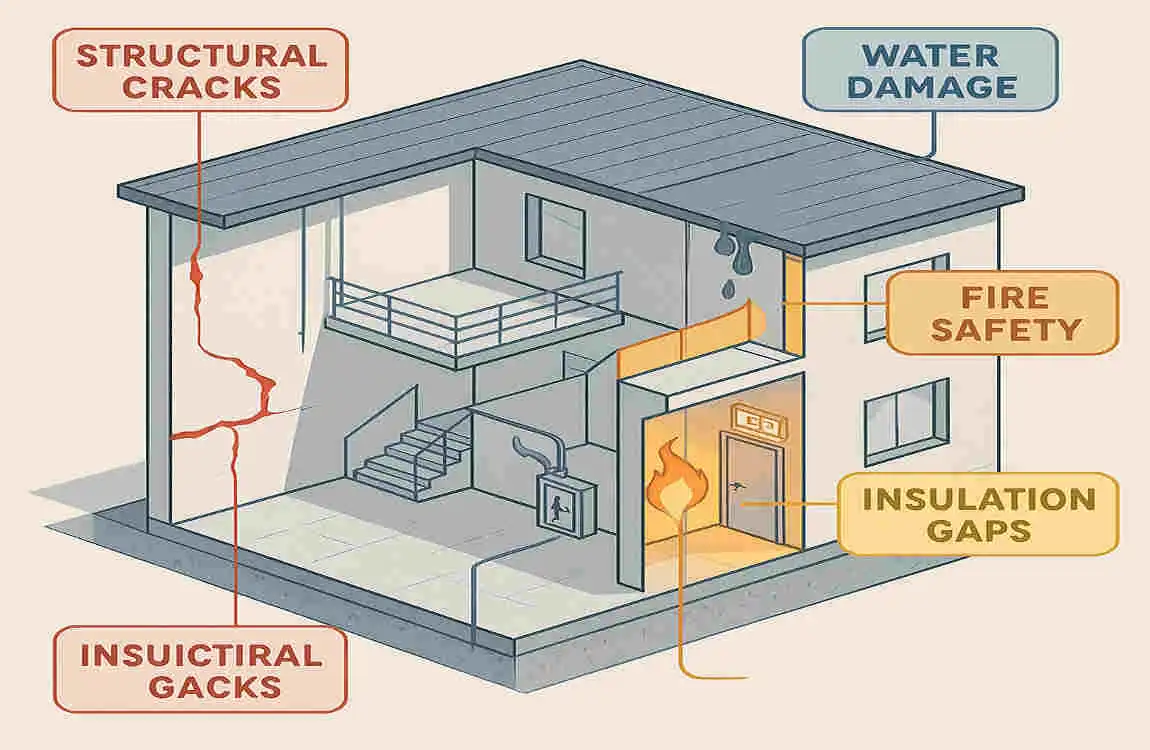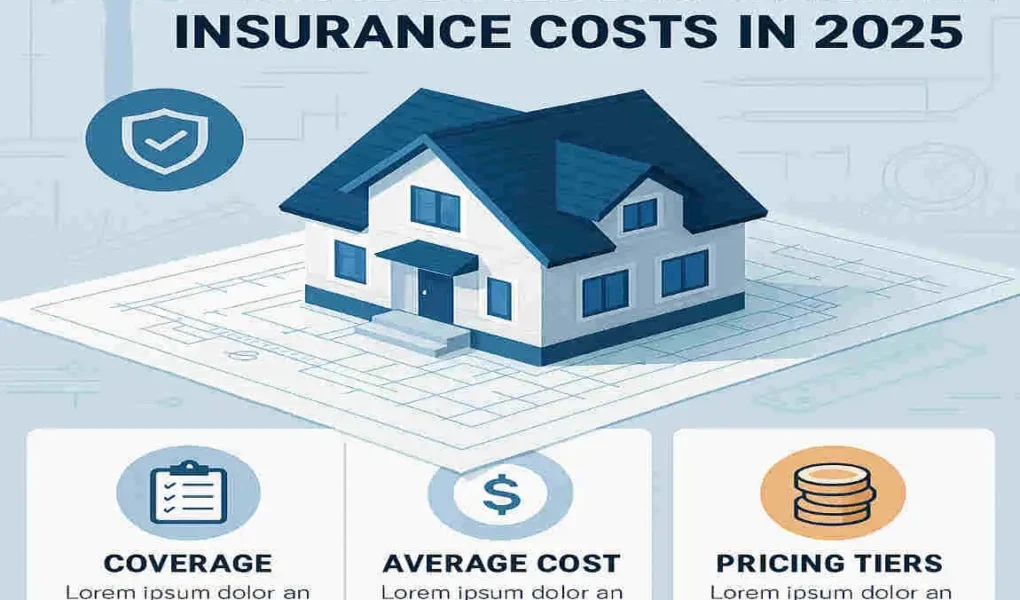In today’s fast-paced world, where new homes are being built every day, both homeowners and builders must understand the ins and outs of home builder’s warranty insurance. This type of insurance plays a vital role in protecting all parties involved in the construction process. But the big question on everyone’s mind is, “How much is a home builder’s warranty insurance in 2025?”
What is Home Builders Warranty Insurance?

Understanding the Basics
Home builders‘ warranty insurance, also known as builders’ warranty insurance, is a type of insurance that protects homeowners against potential issues with their newly constructed homes. This insurance covers problems that may arise due to builder insolvency, incomplete work, or defective construction.
The Importance of Protection
Imagine spending your hard-earned money on your dream home, only to discover that the builder has gone bankrupt or left the job unfinished. Home builders’ warranty insurance steps in to safeguard your investment, providing peace of mind during the construction process and beyond.
Mandatory Requirements in 2025
In most Australian states and major markets, home builders’ warranty insurance is mandatory as of 2025. This means that builders are legally required to secure this insurance before commencing any construction project, ensuring that homeowners are protected regardless of the circumstances.
Coverage Periods
Home builders’ warranty insurance typically offers coverage for different periods, depending on the type of defect. Structural defects, such as issues with the foundation or framing, are usually covered for 6-7 years, while non-structural defects, like faulty plumbing or electrical work, may be covered for 2 years.
Legal and Regulatory Context
In 2025, there will be significant updates to the legal and regulatory framework surrounding warranty insurance for home builders. These changes aim to enhance consumer protection and ensure that builders maintain high standards of quality and financial stability.
Breakdown of Coverage and Benefits
What’s Covered?
Home builders’ warranty insurance typically covers a wide range of defects and problems that may arise during or after construction. Some common examples include:
- Structural defects, such as issues with the foundation, walls, or roof
- Water ingress or leaks
- Fire safety concerns
- Faulty plumbing or electrical work
Duration of Coverage
As mentioned earlier, the duration of coverage varies depending on the type of defect. Structural defects are generally covered for a longer period, typically 6-7 years, whereas non-structural defects are normally covered for a shorter period, usually 2 years. It’s essential to review your policy carefully to understand the specific coverage periods.
Exclusions to Be Aware Of
While home builders’ warranty insurance provides comprehensive coverage, it is essential to be aware of certain exclusions. These may include:
- Normal wear and tear
- Damage caused by natural disasters or acts of God
- Defects resulting from poor maintenance or neglect
- Issues that arise due to homeowner modifications or alterations
The Claims Process
If you encounter a covered defect or issue with your new home, the claims process is designed to protect you financially. You’ll need to notify your insurance provider, who will then assess the problem and work with the builder to rectify the situation. In cases where the builder is unable or unwilling to fix the issue, the insurance company will step in to cover the costs of repairs or compensation.
Expanded Coverage in 2025
In 2025, improvements and expansions have been made to the coverage offered by home builders’ warranty insurance. For example, some providers have expanded their definition of defects to include more comprehensive protection against issues like water ingress and fire safety concerns. These enhancements aim to provide even greater peace of mind for homeowners.
Factors Influencing the Cost of Home Builders’ Warranty Insurance
Typical Cost Range
The cost of home builders’ warranty insurance typically ranges from 0.5% to 1% of the total contract value. This means that for a $500,000 construction project, you can expect to pay between $2,500 and $5,000 for insurance coverage.
Contract Value Impact
The contract value of your construction project has a direct impact on the cost of home builders’ warranty insurance. Larger projects with higher contract values will generally result in higher premiums, as there is more at stake in terms of potential defects or issues.
Location and Jurisdiction Differences
The cost of home builders’ warranty insurance can also vary depending on your location and the specific jurisdiction in which you reside. Different states and territories may have different minimum contract values that trigger the need for insurance, as well as varying coverage requirements and limits.
Builders’ Responsibility and Cost Passing
While builders are responsible for securing and paying for home builders’ warranty insurance, these costs are ultimately passed on to homeowners. The cost of insurance is typically factored into the overall price of the construction project, so homeowners need to understand what they can expect to pay for insurance.
State-by-State Differences
In 2025, notable differences exist in the warranty insurance requirements and limits for home builders across states. For example:
- In New South Wales (NSW), the maximum payout for structural defects has been increased to provide greater protection for homeowners.
- In Queensland, there are specific coverage requirements for different types of construction projects.
- In Victoria, builders must meet certain financial criteria to be eligible for warranty insurance.
Rising Construction Costs and Inflation
As construction costs continue to rise and inflation impacts the economy, the cost of home builders’ warranty insurance has also increased in 2025. Both builders and homeowners need to be aware of these changes and factor them into their budgeting and planning processes.
How Much Does Home Builders’ Warranty Insurance Cost in 2025?

Detailed Cost Estimates
Based on the latest data for 2025, here are some detailed cost estimates for home builders’ warranty insurance in key states or regions:
State/RegionSmall Renovation ($50,000)Medium Construction ($250,000)Large Construction ($1,000,000)
New South Wales $250 – $500 $1,250 – $2,500 $5,000 – $10,000
Queensland $200 – $400 $1,000 – $2,000 $4,000 – $8,000
South Australia $225 – $450 $1,125 – $2,250 $4,500 – $9,000
Examples of Typical Premiums
To give you a better idea of what you can expect to pay, let’s look at some examples of typical premiums for different types of home building projects:
- Small Renovation: For a $50,000 renovation project, you can expect to pay between $200 and $500 for home builders’ warranty insurance, depending on your location and the specific coverage you choose.
- Medium Construction: A $250,000 construction project may require a premium of $1,000 to $2,500, again depending on various factors.
- Large Construction: For a $1,000,000 construction project, the cost of home builders’ warranty insurance could range from $4,000 to $10,000 or more.
Cost Comparisons Across States
When comparing the cost of home builders’ warranty insurance across different states, it’s important to consider the specific coverage requirements and limits in each jurisdiction. For example:
- In New South Wales, the higher maximum payout for structural defects may result in slightly higher premiums compared to other states.
- In Queensland, the specific coverage requirements for different types of construction projects can impact the overall cost of insurance.
- In South Australia, builders must meet certain financial criteria, which can influence the cost of warranty insurance.
Premium Payment Timing and Inclusion
The cost of home builders’ warranty insurance is typically included in the overall building costs and paid by the builder. However, the timing of premium payments can vary depending on the specific policy and provider. Some builders may choose to pay the premium upfront, while others may opt for a payment plan spread out over the course of the construction project.
Realistic Scenarios
To help you better understand how much you can expect to pay for home builders’ warranty insurance, let’s look at a few realistic scenarios:
- Scenario 1: You’re building a new home in New South Wales with a contract value of $500,000. Based on the typical cost range of 0.5% to 1%, you can expect to pay between $2,500 and $5,000 for warranty insurance.
- Scenario 2: You’re renovating your existing home in Queensland with a contract value of $100,000. In this case, the cost of warranty insurance ranges from $400 to $800.
- Scenario 3: You’re constructing a large commercial building in South Australia with a contract value of $2,000,000. The cost of home builders’ warranty insurance for this project could range from $8,000 to $16,000 or more.
Recent 2025 Changes Affecting Coverage and Pricing
Key Regulatory and Market Changes
In 2025, several key regulatory and market changes have impacted home builders’ warranty insurance coverage and pricing. These changes include:
- Increased Coverage Limits: Some states, such as New South Wales, have raised the maximum payout for structural defects, providing greater protection for homeowners.
- Stricter Builder Financial Checks: To reduce the risk of builder insolvency, more stringent financial checks are now in place for builders seeking warranty insurance.
- Expanded Defect Definitions: Some insurance providers have expanded their definitions of defects to include more comprehensive coverage for issues such as water ingress and fire safety concerns.
- Digitalisation and Policy Management Improvements: The home builders’ warranty insurance industry has adopted digitalisation, enabling builders and homeowners to more easily manage their policies and file claims.
Impact on Cost and Homeowner Protections
These recent changes in 2025 have had a notable impact on both the cost and the level of protection offered by home builders’ warranty insurance. While some changes, such as increased coverage limits and expanded defect definitions, may result in slightly higher premiums, they also provide greater peace of mind for homeowners. The stricter financial checks for builders help to reduce the risk of insolvency, which can ultimately lead to lower costs for everyone involved.
Tips for Homeowners and Builders When Considering Warranty Insurance
Verifying Adequate Coverage
As a homeowner, it’s crucial to verify that your builder has secured adequate home builders’ warranty insurance coverage for your project. You can do this by:
- Requesting a copy of the insurance policy from your builder
- Reviewing the policy to ensure it meets the minimum coverage requirements for your state or territory
- Confirming that the policy covers the entire duration of your construction project
Builder Compliance and Risk Management
For builders, understanding and complying with home builders’ warranty insurance requirements is essential for managing risk and maintaining a strong reputation in the industry. Builders should:
- Familiarise themselves with the specific coverage requirements and limits in their state or territory
- Work with reputable insurance providers to secure the necessary coverage
- Maintain accurate records and documentation to support any potential claims
Negotiating Costs and Reviewing Policies
Both homeowners and builders can take steps to negotiate the cost of home builder’s warranty insurance and ensure they have the best possible coverage. Some tips include:
- Comparing quotes from multiple insurance providers to find the most competitive rates
- Reviewing policies carefully to understand the coverage, exclusions, and claims process
- Working with an experienced insurance broker who can help navigate the process and find the best options
Understanding Legal Obligations and Coverage Scope
Ultimately, both homeowners and builders must have a clear understanding of their legal obligations and the scope of coverage provided by home builders’ warranty insurance. This includes:
- Knowing the mandatory nature of warranty insurance in most Australian states and major markets
- Understanding the specific coverage periods for different types of defects
- Being aware of any exclusions or limitations in the policy
- Staying informed about the latest regulatory updates and changes in 2025




